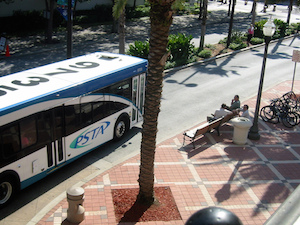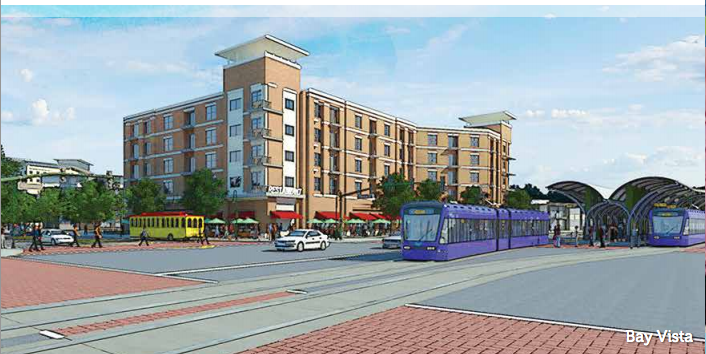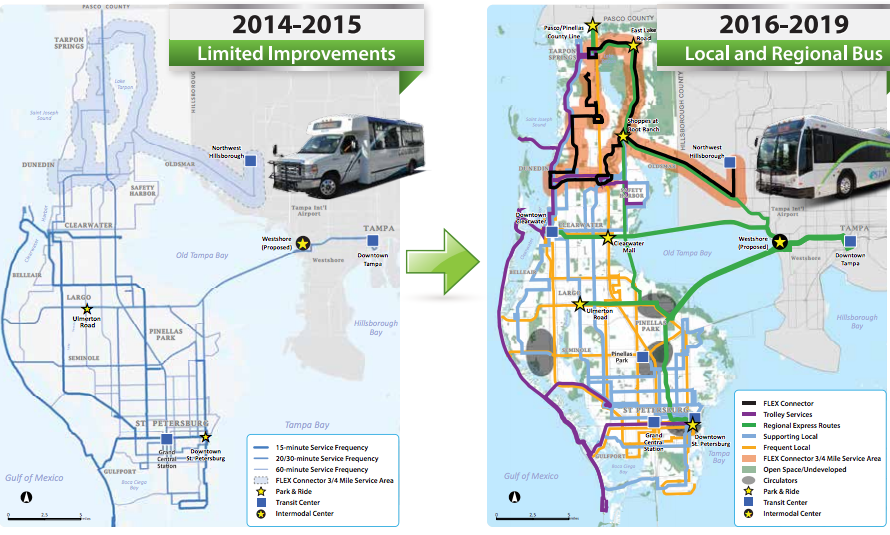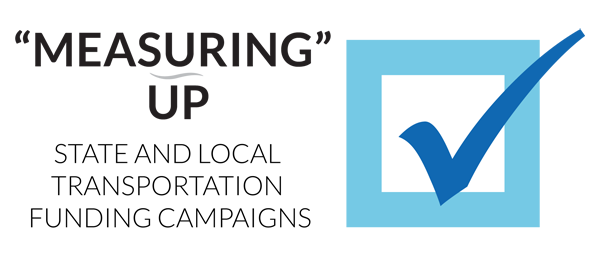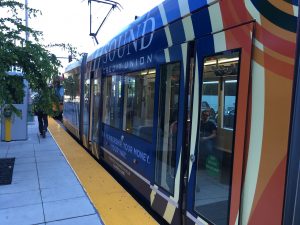 Last week, I attended the Center for Transportation Excellence’s (CFTE) bi-annual Transit Initiatives and Communities (TIC) Conference in Seattle. The conference focused on how to win local ballot measures to fund transit, but many of the lessons can be applied to different transportation ballot measures. The big take home message was this: everyone has a different role to play.
Last week, I attended the Center for Transportation Excellence’s (CFTE) bi-annual Transit Initiatives and Communities (TIC) Conference in Seattle. The conference focused on how to win local ballot measures to fund transit, but many of the lessons can be applied to different transportation ballot measures. The big take home message was this: everyone has a different role to play.
The reason for holding the conference in Seattle is pretty obvious to those familiar with the recent ballot measure victories for the county, city and region. Speakers were on hand to tell those stories, including T4A members like Tacoma, Seattle, King County, Transportation Choices Coalition, Move LA, and the Metro Atlanta Chamber. We also heard lessons learned from places big and small, including: Indianapolis, Los Angeles, Spokane, and Ellensburg.
So, what do I mean by “Everyone has a role to play”? Agency staff, local politicians, business leaders, labor leaders, and advocates all have very specific roles in bringing a ballot measure across the finish line. As we heard T4A Advisory Board member Denny Zane say at Capital Ideas last fall and again here at TIC, you need to pull together this broad coalition early to ensure everyone is bought into winning. Assuming you’ve already done that, here is what each player can do in their role:
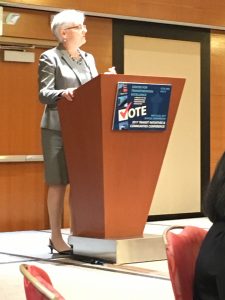 Agency Staff often feel disempowered because the law tends to prohibit advocating for a measure that will benefit the agency on agency time. We learned from Steven Jones at AC Transit that many agencies could do a lot more. With the caveat that agency staff should check with their legal council, Steven told the story of being very aggressive in sharing information about their ballot measure, reminding transit riders about the registration deadline and election dates, and even registering new voters while making sure they never told anyone to vote a particular way. “The bus is your friend. Use it!” said Steve. They used bus marquis, and pamphlets on buses to communicate about election dates and voter information. They even dedicated a bus to voter registration, bringing it to events and festivals. Another key role for agency staff: delivering on the promises of the campaign. “The way to change perception is to be effective every day,” said Rob Gannon, general manager of King County Metro, a T4A member.
Agency Staff often feel disempowered because the law tends to prohibit advocating for a measure that will benefit the agency on agency time. We learned from Steven Jones at AC Transit that many agencies could do a lot more. With the caveat that agency staff should check with their legal council, Steven told the story of being very aggressive in sharing information about their ballot measure, reminding transit riders about the registration deadline and election dates, and even registering new voters while making sure they never told anyone to vote a particular way. “The bus is your friend. Use it!” said Steve. They used bus marquis, and pamphlets on buses to communicate about election dates and voter information. They even dedicated a bus to voter registration, bringing it to events and festivals. Another key role for agency staff: delivering on the promises of the campaign. “The way to change perception is to be effective every day,” said Rob Gannon, general manager of King County Metro, a T4A member.
Local Politicians tend to step a bit farther forward than is optimal in many campaigns. Yet, can be a very powerful source of support if they are restrained about elbowing their way into the limelight, according to Jay Schenirer, a Sacramento City Council member. Jay informed us that politicians are better off leaving the campaign organizing to community groups as stakeholders have reason to not be honest about their positions with politicians while lobbying other issues. Politicians can do a number of critical things to lay the groundwork for a successful campaign. These include: polling, education, raising money and providing infrastructure like mailing lists and campaign volunteers. Local elected officials can also sometimes be helpful in bringing certain groups on board like the business community. Perhaps most important, politicians can “rig the election” by adjusting the geography and timing of a ballot measure to maximize the prospects of success.
Business leaders typically get less engaged in the exact contents of a measure. They can provide funding for the campaign, and can bring effective spokespeople in the right context, especially from the healthcare industry. “The business community doesn’t knock on doors, but they do raise money for campaigns,” said Hilary Norton of Fixing Angelenos Stuck in Traffic (FAST).
Labor has some capability to raise funds, but their biggest strength is boots on the ground. “Labor is good at knocking on doors and making phone calls,” said Rusty Hicks from the LA County Federation of Labor. Labor groups have big memberships that represent a voter and volunteer base. They have the organizing infrastructure like call centers and newsletters to members. Rusty cautioned organizers to acknowledge diversity of labor membership and tailor the message and approach accordingly to recruit support from service sector, building trades and government worker unions. “Thirty percent of union members are Republican so you need some labor spokespeople to reach those voters,” he said.
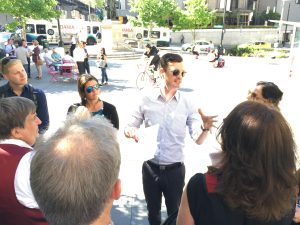 Advocates by contrast care a lot about what’s in a package. This type of group can bring legitimacy of the measure from a particular perspective such as transit or biking and walking, and expertise in building coalitions and running campaigns. Shefali Ranganathan of Transportation Choices Coalition, a T4A member, who led the successful ST3 campaign for $54 billion-worth of transit investments in the Puget Sound region, talked about using polling data and modeling to identify a group of persuadable voters on which they could focus messaging and outreach efforts.
Advocates by contrast care a lot about what’s in a package. This type of group can bring legitimacy of the measure from a particular perspective such as transit or biking and walking, and expertise in building coalitions and running campaigns. Shefali Ranganathan of Transportation Choices Coalition, a T4A member, who led the successful ST3 campaign for $54 billion-worth of transit investments in the Puget Sound region, talked about using polling data and modeling to identify a group of persuadable voters on which they could focus messaging and outreach efforts.
There were several overarching messages that participants took from the conference. Denny Zane admonished participants to make big plans, telling us, “Fortune favors the bold.” Furthermore, the work does not end when the campaign ends. In reference to the successful passage of “ST3” in the Puget Sound region last November, Tacoma mayor Marilyn Strickland said, “The campaign didn’t end in November. It began in November. Sound Transit needs to deliver because someday there will be an ST4.”




